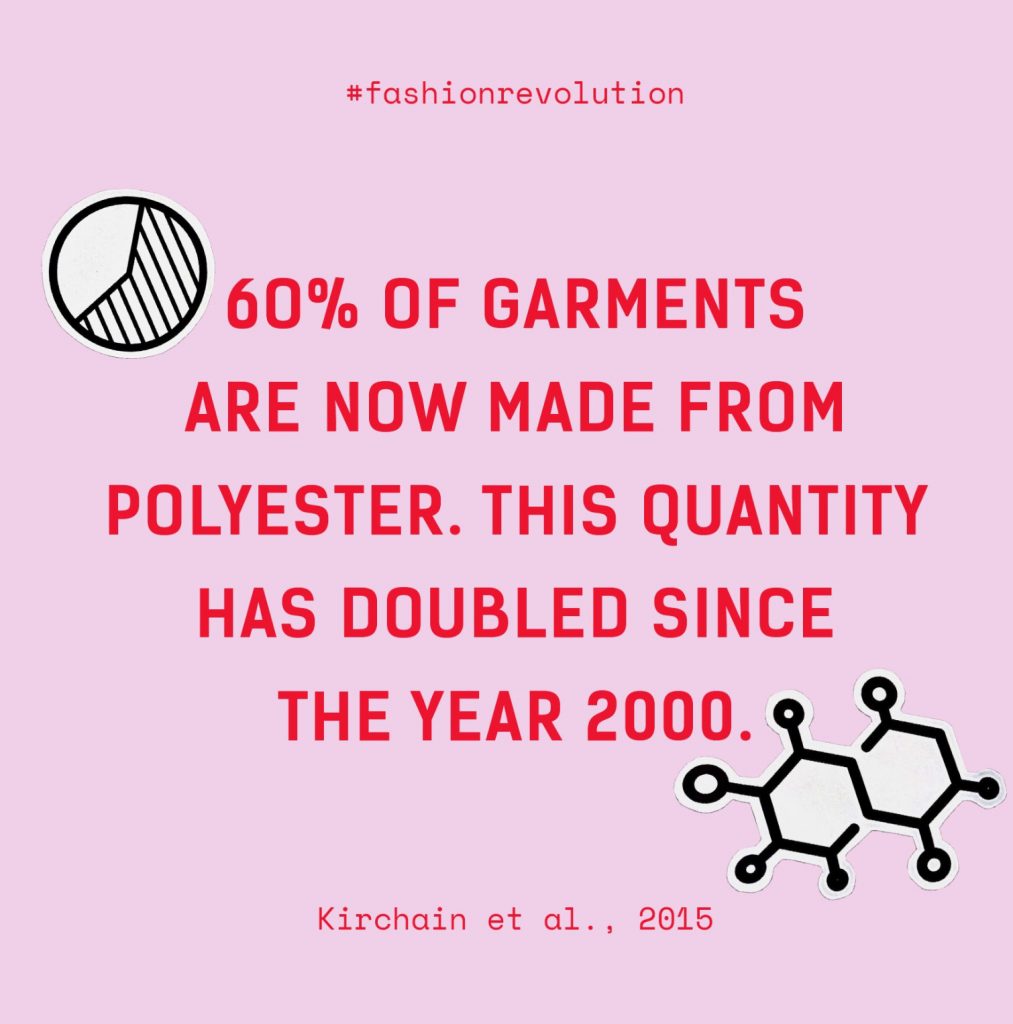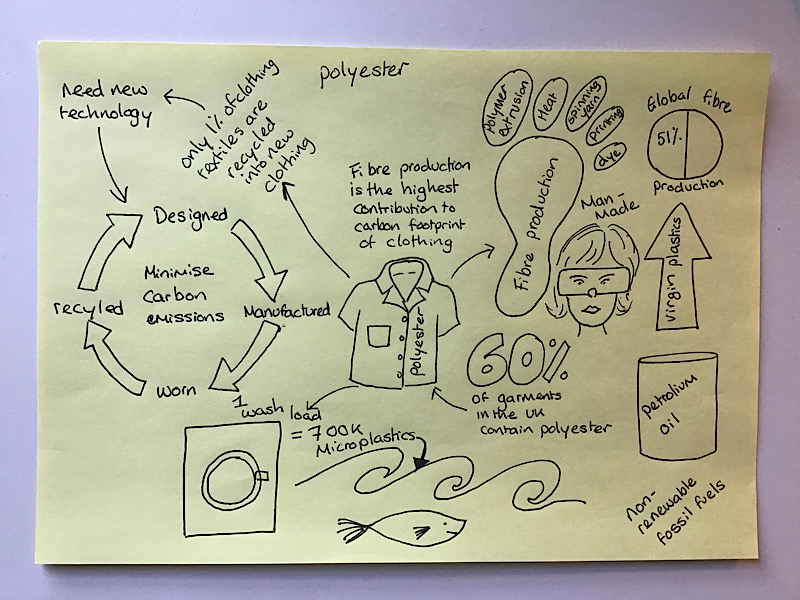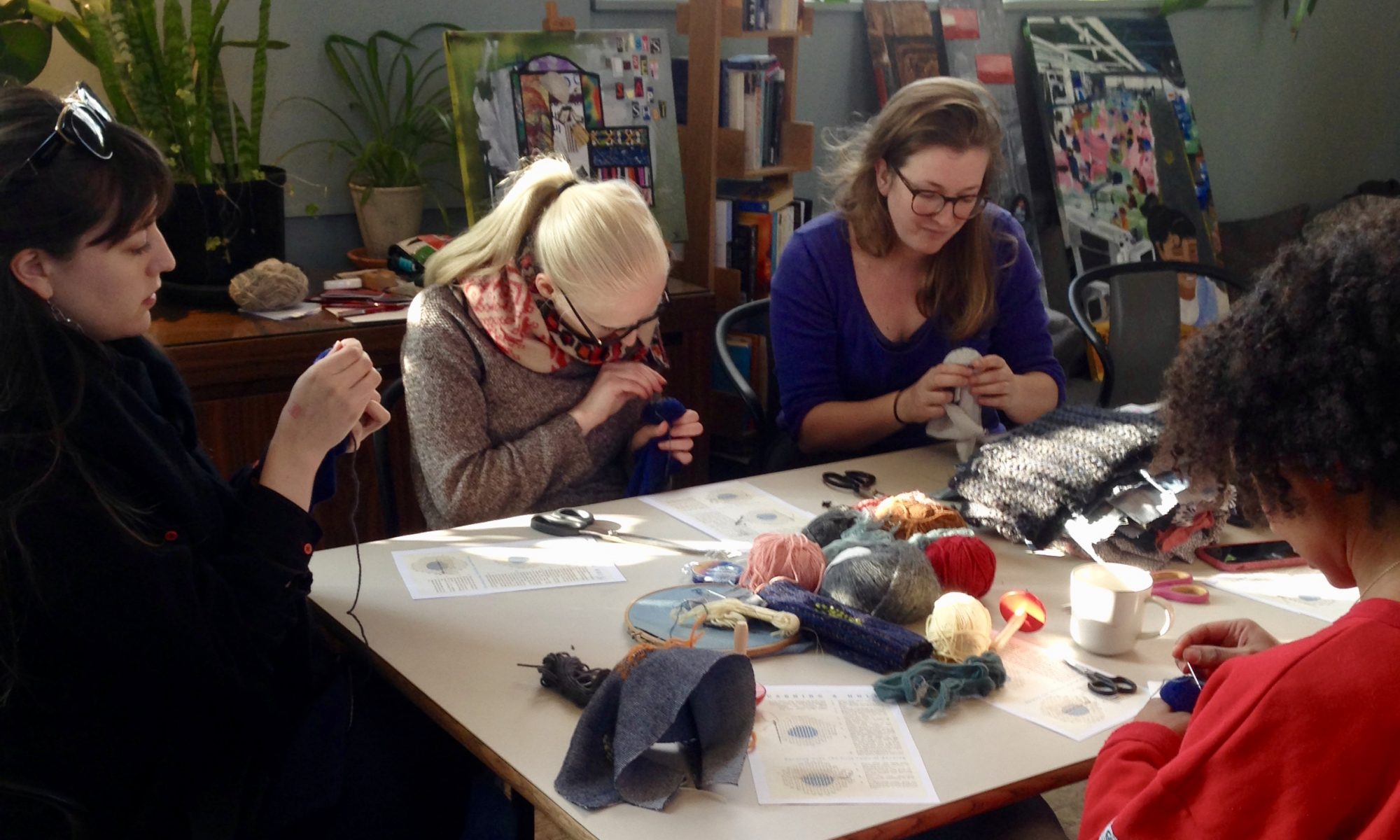
During Fashion Revolution Week 2021, the charity are asking us to investigate #whatsinmyclothes? We have been researching the most common fibres in our clothes; how they are made and their effects on the environment. Polyester is in 60% of our clothes in the UK and makes up 51% of all the fibres produced globally. It doesn’t require as much water to produce as Cotton but overall it has a more negative effect on our planet.
‘A polyester shirt has more than double the carbon footprint of a cotton shirt.’
Fixing Fashion, UK Government Audit Committee 2019

What’s Next for Polyester?
Plastic fibres have been in mass production since the middle of the 20th Century and increasing in use ever since. During 2019’s Fashion Question Time, Laura Balmond, Project Manager for Make Fashion Circular (Ellen MacArthur Foundation) stated ‘[In 2018] there were 100m tonnes of fibres that were produced for all textiles. Over 60% of those are plastic based so it is difficult to swap out like for like. Where would we find 60 billion tonnes of natural fibres from as soon as you needed them?’. It isn’t as simple as immediately swapping the global fibre production to a more sustainable source.
UK charity, WRAP, are funding projects to find new innovations in plastics recycling, including Polyester textiles. They are looking for a ‘state of the art’ solution to this growing problem. Currently, only 1% of textiles are recycled into new clothing, mostly because there isn’t the technology or the logistics to manage this. There is also the problem that once plastic (inc Polyester) has been recycled it is difficult to recycle it again as it becomes a much weaker substrate.
We don’t have to wait for this new technology, we can make a change now. We can buy less new products, swapping to vintage and second hand clothes. When we do buy new textiles, switch to organic or recycled. When washing fabrics that contain Polyester or other forms of plastic fibres it is important to wash them in a Guppy Friend Bag. This helps prevent microplastics from reaching our seas and oceans.
References
https://globalfashionagenda.com/pulse-of-the-fashion-industry-2018-report-released/#
https://publications.parliament.uk/pa/cm201719/cmselect/cmenvaud/1952/report-summary.html
http://www.wrap.org.uk/sites/files/wrap/valuing-our-clothes-the-cost-of-uk-fashion_WRAP.pdf
This week is Fashion Revolution Week. The eighth year in which the charity ask us to challenge our favourite fashion brands with the question #whomademyclothes? and #whatsinmyclothes? Fashion Revolution was established in 2013 a year after the Rana Plaza disaster that killed 1138 garment workers in Bangladesh. Since then charity have been campaigning globally against the human and environmental consequences of the fashion industry. Encouraging brands to change their practices to a more transparent and circular model. This year the charity are encouraging us to ask #whatsinmyclothes? and #What’s in my fabric? and investigating common fibres we find in our clothes
